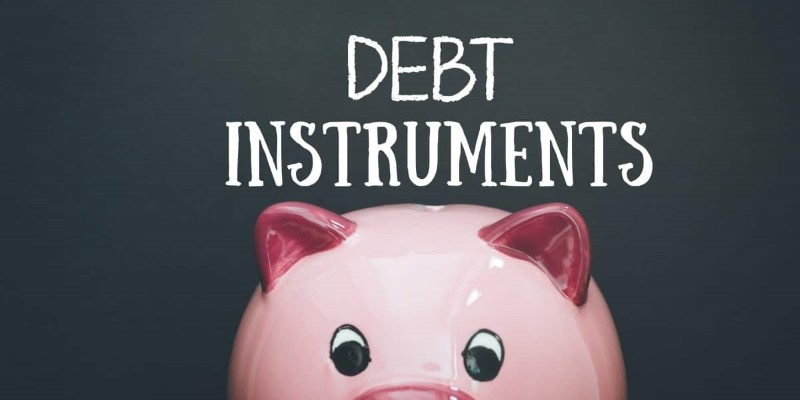Introduction to Freddie Mac and Its Guideline’s Ins And Outs
Dec 07, 2023 By Triston Martin
To ensure mortgage lenders had a steady supply of capital, the Federal Home Loan Mortgage Corp. (FHLMC), now Freddie Mac, was created in 1970. Freddie Mac helps middle-class Americans purchase homes or find affordable rentals by becoming a significant participant in the secondary mortgage market. The company carries out its mission by buying, guaranteeing, and securitizing mortgages; stockholders own it.
The Emergency Home Finance Act of 1970 created Freddie Mac stock as a GSE to reduce interest rate risk for savings, loan institutions, and smaller banks. A wholly owned Federal Home Loan Bank System subsidiary, it encouraged mortgage lenders and middle-income homeownership.
Under FIRREA, a significant overhaul occurred in 1989. The move from government to public ownership of Freddie Mac was crucial. A new chapter in Freddie Mac guidelines structure and operations began when its shares were traded on the New York Stock Exchange.
The 2008 financial crisis put unprecedented pressure on housing and mortgage markets, prompting government action. After the subprime mortgage crisis, the FHFA took over Freddie Mac. This was done to stabilize the housing market and avert financial disaster. Freddie Mac remains under federal conservatorship despite efforts to progressively move it toward independence, stressing the government's role in preserving its stability and mission.
Freddie Mac evolved from a government program to a publicly held firm, reacting to housing market changes and economic uncertainty. The company remains vital to the secondary mortgage market, boosting American homeownership and rental housing.
Workings of Freddie Mac

Banks and other commercial mortgage lenders sell house mortgages to Freddie Mac. As Freddie Mac finances these institutions, they may provide additional loans and mortgages to homeowners, boosting market liquidity. Freddie Mac requires these home loans to meet specific criteria before buying them.
After purchasing several mortgages, Freddie Mac has two main management options. First, it may hold mortgages as assets in its portfolio. Second, it creates mortgage-backed securities from mortgage batches. MBS are marketed to investors seeking steady income. Securitization gives Freddie Mac more money and spreads risk to more investors.
It's crucial for Freddie Mac to "insure" its mortgages. This reduces investment risk by guaranteeing loan principle and interest payments. Thus, Freddie Mac securities are liquid and typically have credit ratings similar to U.S. Treasuries. This insurance boosts market trust, making Freddie Mac's securities appealing to a broad spectrum of investors and stabilizing the housing and financial markets. Freddie Mac guidelines are vital for financial institutions, homeownership, and secondary mortgage market stability.
Criticism of Freddie Mac
Freddie Mac has been criticized for its low-cost funding due to its links to the U.S. government. This advantage allows Freddie Mac to borrow money at lower rates than other financial firms. Critics say this favorable financial position and the size and complexity of Freddie Mac's retained portfolio represent a systemic risk to the U.S. economy. The issue is that Freddie Mac's breadth and complexity create weaknesses that might have far-reaching effects, especially during economic downturns.
After the 2008 financial crisis, several blamed Freddie Mac and Fannie Mae's unrestrained expansion. Critics say Freddie Mac's large portfolios and mortgage risk management issues contributed to the Great Recession. Detractors say the companies' bad business decisions and insufficient cash during the housing boom exacerbated the disaster.
Advocates of Freddie Mac and Fannie Mae argue that while the companies committed mistakes, their portfolios made up just a tiny portion of the subprime loans involved in the crisis. This argument highlights the intricacies of GSEs, their influence on the financial system, and the difficulties of combining public backing with threats to economic stability.
Freddie Mac vs. Fannie Mae
Fannie Mae and Freddie Mac are public-purpose secondary mortgage market businesses. They differ in mortgage sources.
Federal government agency Fannie Mae was created in 1938 to serve the secondary mortgage market. A private-public business since 1954. It turned private-public over time. Large retail and commercial banks offer FHA-insured mortgage loans to Fannie Mae.
However, the Freddie Mac mortgage rates of 1970 created Freddie Mac. It is mission-driven and publicly traded like Fannie Mae. Local "thrift banks" and "savings and loan associations" lend to Freddie Mac. Regarding the secondary mortgage market, Fannie Mae and Freddie Mac are comparable. However, their mortgage lending sources differ. While Fannie Mae obtains loans from significant retail or commercial banks, Freddie Mac gets loans from smaller banks that emphasize community engagement.
Advantages of Freddie Mac SBL

The Freddie Mac Small Balance Loan (SBL) program offers several benefits for commercial real estate borrowers seeking flexibility and advantageous terms. This program provides adjustable loan levels from $750,000 to $7.5 million, catering to a broad spectrum of applicants. The program's low-interest rates, starting at 4.51%, make borrowing affordable.
The SBL program's high leverage allows borrowers to borrow up to 80% LTV, providing significant project funding. The program's modest 1.20x Debt Service Coverage Ratio (DSCR) minimums make terms borrower-friendly. Also, 30-year amortizations help borrowers keep payments subtle.
SBL further accommodates borrowers' different demands with partial and full-term interest-only loans. Using up to 10-year fixed-rate terms and 20-year hybrid Adjustable Rate Mortgage (ARM) terms, borrowers may customize their financing arrangements to suit their needs and business goals. Soft step-down prepayment penalties and prolonged rate guarantees provide borrowers with alternatives and stability, making the program more appealing. With few exceptions, non-recourse financing gives borrowers trust and provides a solid, borrower-friendly commercial real estate finance option.
Disadvantages of Freddie Mac SBL
The Freddie Mac Small Balance Loan (SBL) program has benefits, but borrowers should consider its drawbacks. This program focuses on ordinary multifamily residences. Homes with 50% or more student or military housing, Section 8 homes with below-market rentals, and LIHTC properties in compliance are usually ineligible. This constraint may exclude some dwelling types from eligibility.
Another downside is critical third-party assessments like Freddie Mac Multifamily Appraisals, Property Condition Assessments, and Phase I Environmental Assessments. Demand for these reports raises transaction expenses and delays loan approval and closure.
The policy also bans subordinate lending, which may limit debtors' financing alternatives. This scheme generally requires replacement reserves of up to $300 per unit, increasing borrowers' financial obligations. To assess if the Freddie Mac SBL program suits their financing requirements and property types, borrowers should weigh its pros and downs.
-
 Investment Nov 26, 2024
Investment Nov 26, 2024Exploring Debt Instruments: What They Are and How They Work
What are debt instruments, and why are they important? This article breaks down the various types of debt instruments, including bonds, loans, promissory notes, and commercial paper
-
 Banking Dec 15, 2023
Banking Dec 15, 2023What Are The Causes and Factors Behind High Inflation Rates Worldwide
The recent inflation trend has everybody worried. The general increase in almost everything is distorting markets. Read more.
-
 Banking Nov 07, 2023
Banking Nov 07, 2023Best Credit Cards For Expats
Discover the best credit cards for ex-pats to maximize your travels and put more money back in your pocket. Compare credit cards with global acceptance, online account management tools, insurance coverage, and great rewards. Find the perfect card for you today!
-
 Know-how May 17, 2024
Know-how May 17, 2024Hippo Home Insurance Review: Is It the Right Choice for Your Home?
Explore Hippo Home Insurance's services, including its customer-centric claims process, digital platform, and the unique "Hippo Home Care" feature for homeowners.
